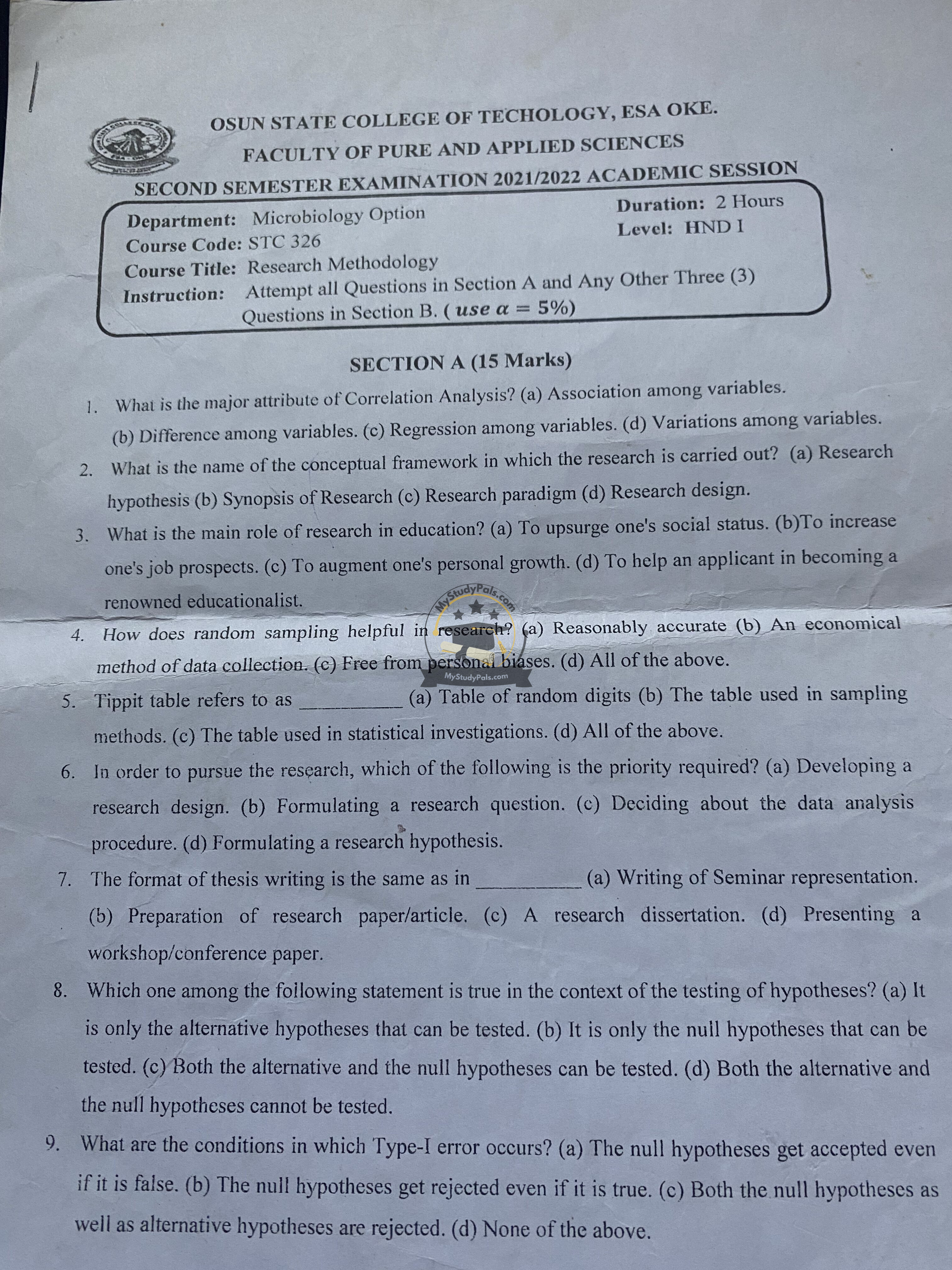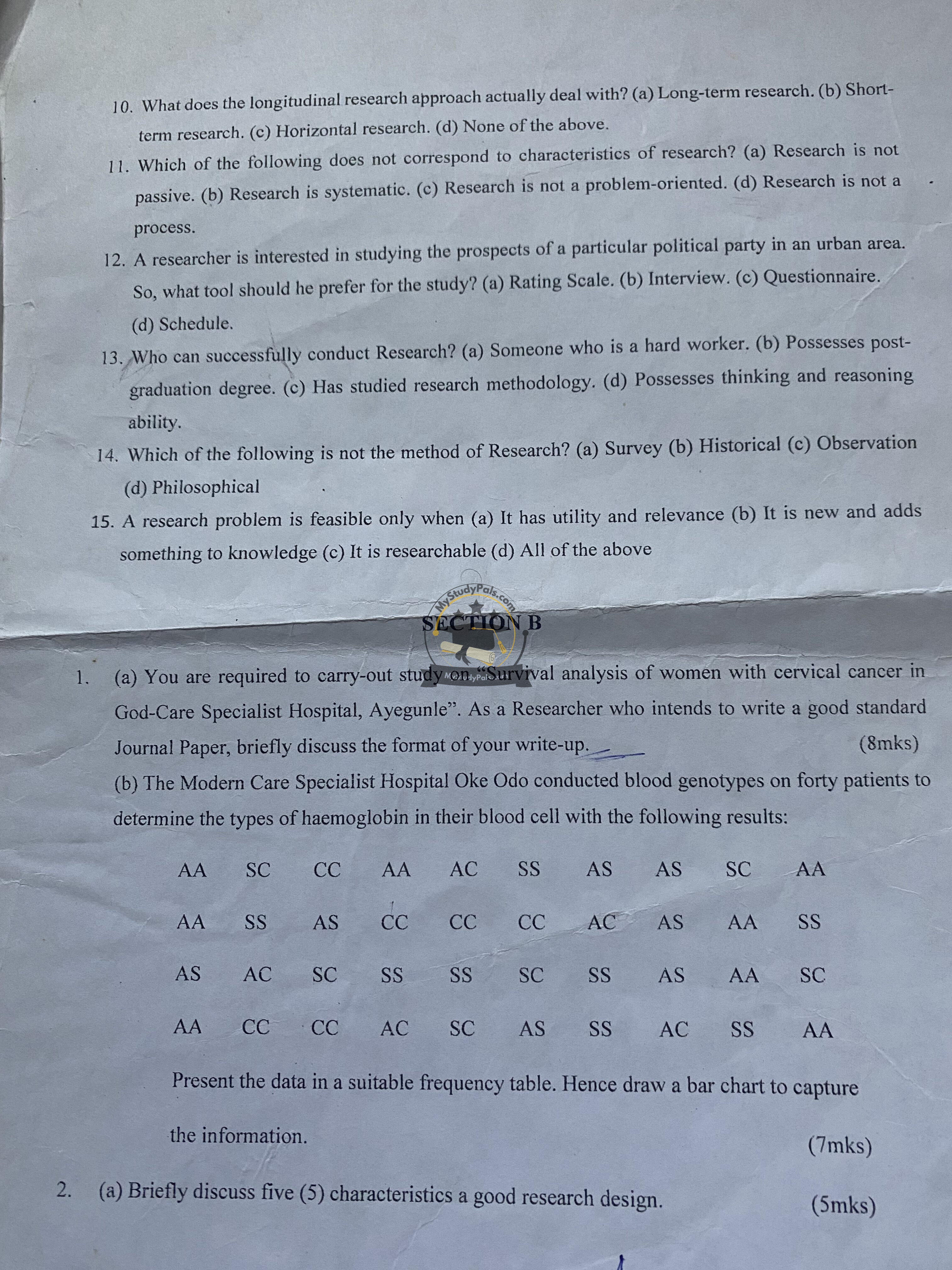ANWSER
Question 1:
Answer: (a) Association among variables.
Question 2:
Answer: (c) Research paradigm.
Question 3:
Answer: (d) To help an applicant in becoming a renowned educationalist.
Question 4:
Answer: (d) All of the above.
Question 5:
Answer: (d) All of the above.
Question 6:
Answer: (b) Formulating a research question.
Question 7:
Answer: (c) A research dissertation.
Question 8:
Answer: (b) It is only the null hypotheses that can be tested.
Question 9:
Answer: (b) The null hypotheses get rejected even if it is true.
Question 10:
Answer: (a) Long-term research.
Question 11:
Answer: (c) Research is not problem-oriented.
Question 12:
Answer: (c) Questionnaire.
Question 13:
Answer: (d) Possesses thinking and reasoning ability.
Question 14:
Answer: (d) Philosophical.
Question 15:
Answer: (d) All of the above.
—
### SECTION B
Question 1 (a):
Answer:
The format of the write-up for the journal paper on “Survival analysis of women with cervical cancer in God-Care Specialist Hospital, Ayegunie” should include the following sections:
1. Title: Clear and concise, reflecting the study’s focus.
2. Abstract: A brief summary of the research objectives, methods, results, and conclusions.
3. Introduction: Background of the study, research problem, objectives, and significance.
4. Literature Review: Summary of existing research related to cervical cancer and survival analysis.
5. Methodology: Description of the research design, population, sample size, data collection, and analysis methods.
6. Results: Presentation of findings using tables, charts, or statistical analysis.
7. Discussion: Interpretation of results, comparison with existing literature, and implications.
8. Conclusion: Summary of key findings and recommendations for future research or policy.
9. References: List of all cited works following a standard citation style.
Question 1 (b):
Answer:
Frequency Table:
| Genotype | Frequency |
|———-|———–|
| AA | 8 |
| SC | 6 |
| CC | 7 |
| AC | 5 |
| SS | 7 |
| AS | 7 |
Bar Chart:
(A bar chart would visually represent the above frequencies, with genotypes on the x-axis and frequency counts on the y-axis.)
Question 2 (a):
Answer:
Five characteristics of a good research design are:
1. Clear Objectives: The design should align with the research goals.
2. Reliability: Results should be consistent and reproducible.
3. Validity: The design should accurately measure what it intends to study.
4. Feasibility: Practical considerations like time, resources, and access to data should be manageable.
5. Flexibility: The design should allow for adjustments if unexpected issues arise during the study.
—



